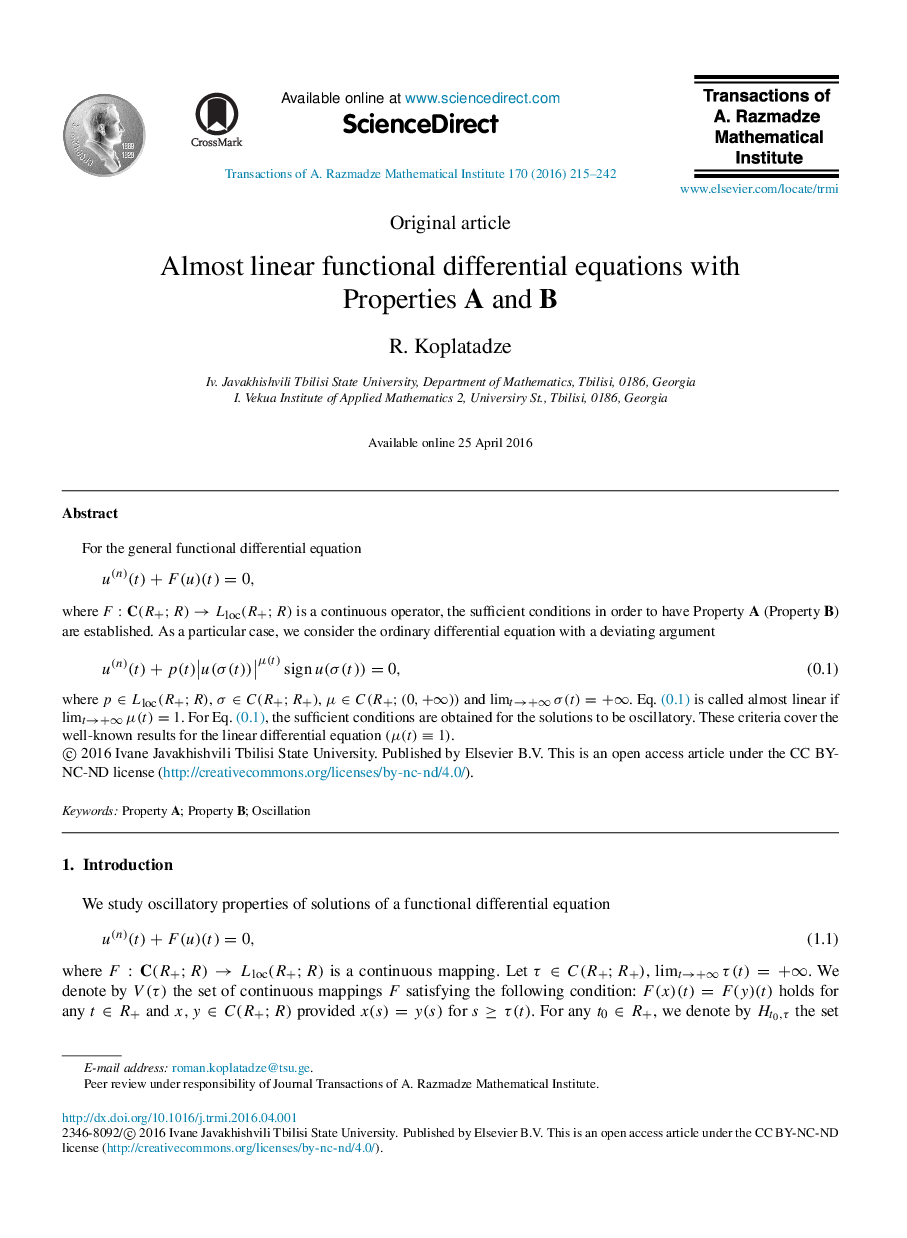| Article ID | Journal | Published Year | Pages | File Type |
|---|---|---|---|---|
| 4624422 | Transactions of A. Razmadze Mathematical Institute | 2016 | 28 Pages |
For the general functional differential equation u(n)(t)+F(u)(t)=0,u(n)(t)+F(u)(t)=0, where F:C(R+;R)→Lloc(R+;R) is a continuous operator, the sufficient conditions in order to have Property A (Property B) are established. As a particular case, we consider the ordinary differential equation with a deviating argument equation(0.1)u(n)(t)+p(t)|u(σ(t))|μ(t)signu(σ(t))=0,u(n)(t)+p(t)|u(σ(t))|μ(t)signu(σ(t))=0, where p∈Lloc(R+;R)p∈Lloc(R+;R), σ∈C(R+;R+)σ∈C(R+;R+), μ∈C(R+;(0,+∞))μ∈C(R+;(0,+∞)) and limt→+∞σ(t)=+∞limt→+∞σ(t)=+∞. Eq. (0.1) is called almost linear if limt→+∞μ(t)=1limt→+∞μ(t)=1. For Eq. (0.1), the sufficient conditions are obtained for the solutions to be oscillatory. These criteria cover the well-known results for the linear differential equation (μ(t)≡1)(μ(t)≡1).
